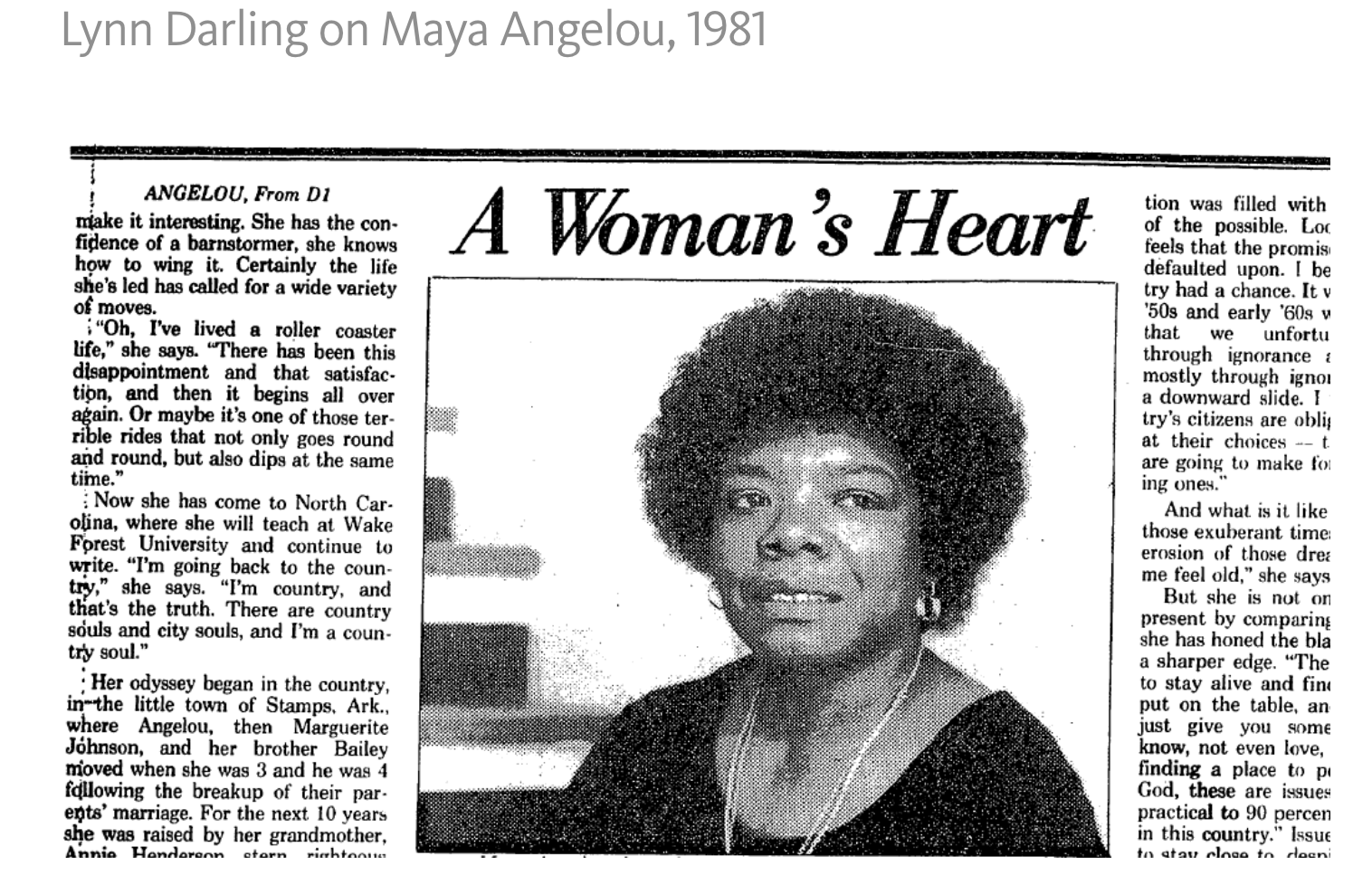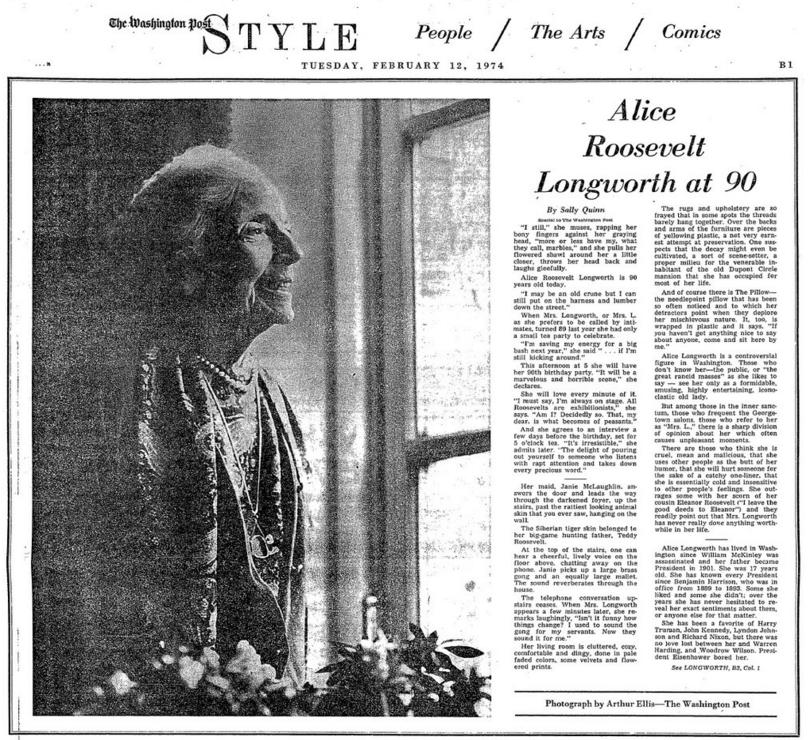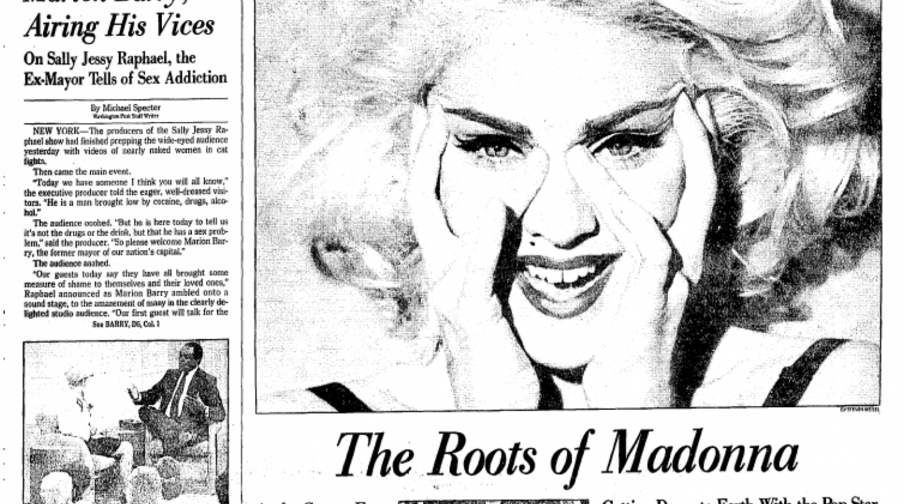The first time Julia Carpenter’s editor took her to the archives at The Washington Post’s previous home, he offered some advice: Be mindful of how much time you spend here.
Carpenter, an embedded social media editor, loves discovering the old Post work, though it can be a bit of a rabbit hole for her. But with her most recent journey to the morgue, she had a very specific goal — find stories about women written by women.
The idea started as a conversation with reporter Dan Zak and editor Amy Argetsinger. They wanted to pull something from the archives for the end of Women’s History Month. Originally, the idea was to share amazing profiles of women, Carpenter said. Then, TV critic Hank Stuever recommended they go a bit farther and find profiles of women written by women.

Screen shot, The Washington Post
“This felt like a good chance to bust open our own archives and turn them inside out for readers,” Carpenter said.
On Tuesday, #womenbywomen debuted with social cards, a hashtag and a new presence on the Web. There’s Donna Britt on Alice Walker from 1989, Sally Quinn on Alice Roosevelt Longworth from 1974 and Lynn Darling on Maya Angelou from 1981. There’s also Martha Sherrill on Madonna from 1991, Marjorie Williams on Sandra Day O’Connor from 1989 and Elisabeth Bumiller on Gloria Steinem from 1983.
The Post has plunged into the archives and resurfaced work for a new audience a few times in recent months, said Carpenter. In December, a 1977 “Star Wars” review found new life. The introduction read: “A long time ago, in a galaxy far, far away, ‘Star Wars’ opened in Washington, D.C. on Memorial Day weekend of 1977 — in exactly one theater.” In January, for the 30th anniversary of the the Challenger explosion, the Post resurfaced a TV critic’s piece about watching it.
Like The Post, many news organizations are getting smarter, and more serious, about mining their old work to reach new audiences. In February, The New York Times shared unpublished images for Black History Month. Alabama Media Group also dug into the photo archives for a social media project. And Esquire created a searchable archive of its work last year.
On Tuesday, Carpenter wrote about the project on Medium.
“Think about it like a Bechdel test, almost. But for journalism,” she wrote.
She knows that’s not exactly what they’re doing here (in the Madonna story, for instance, there are two women but they’re mostly talking about men) but it offers a useful measure for other people to consider their work as well.
“What I’ve really loved is how people have taken this idea of #womenbywomen and they’re not necessarily pointing to pieces from the 80s or 90s, they’re pointing to things from today,” Carpenter said.
The Post will republish two more profiles on Thursday, but what Carpenter hopes is that this is just the beginning of a conversation on social media. It doesn’t have to be work from The Washington Post. And it doesn’t have to be work from the archives.
“It can just be highlighting women writing about women.”

Screen shot, The Washington Post
Correction: An earlier version of this story got Carpenter’s title wrong. She’s an embedded social media editor.







